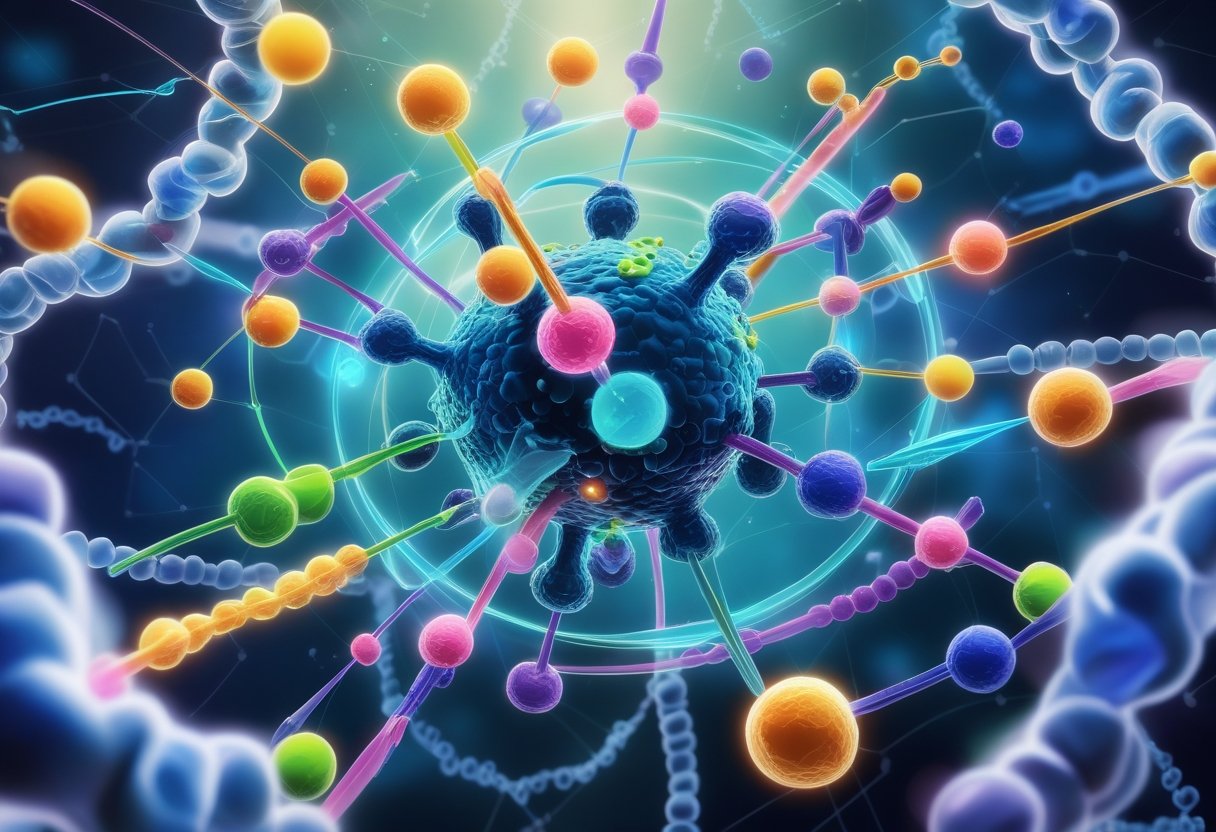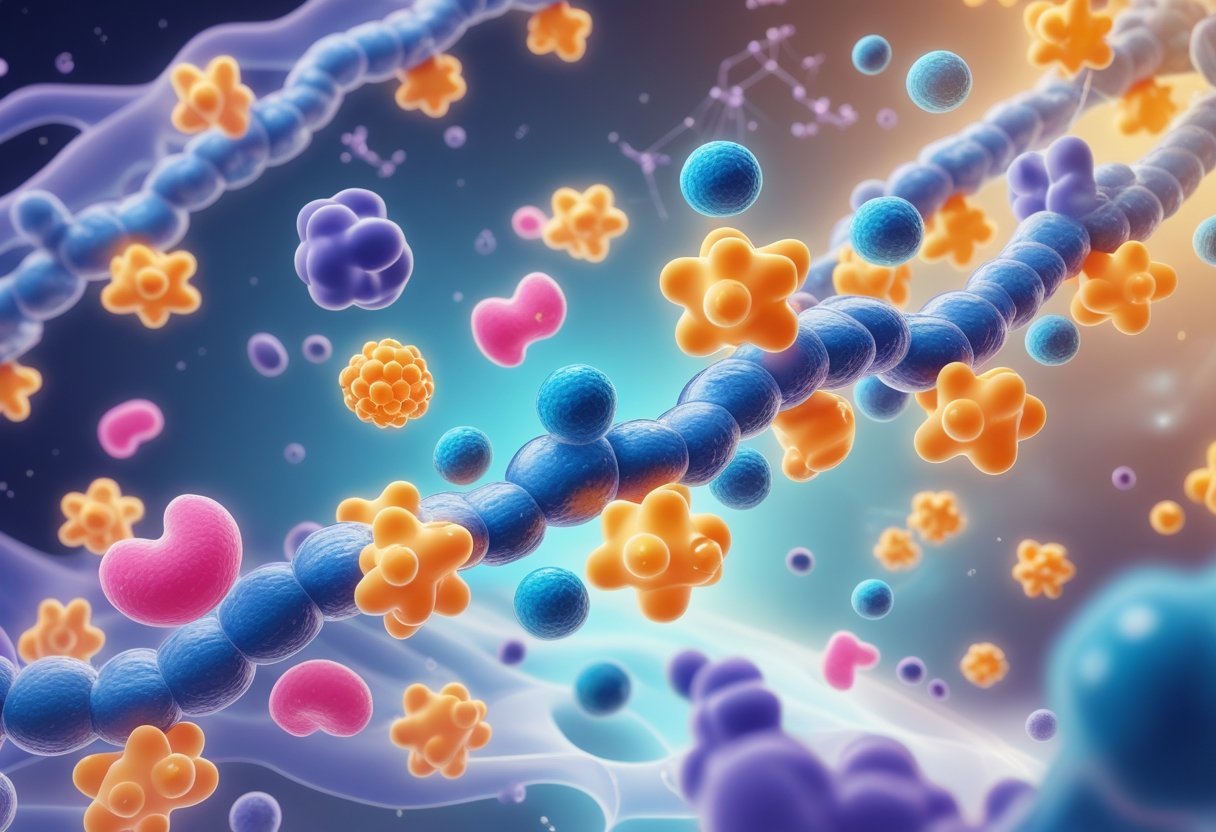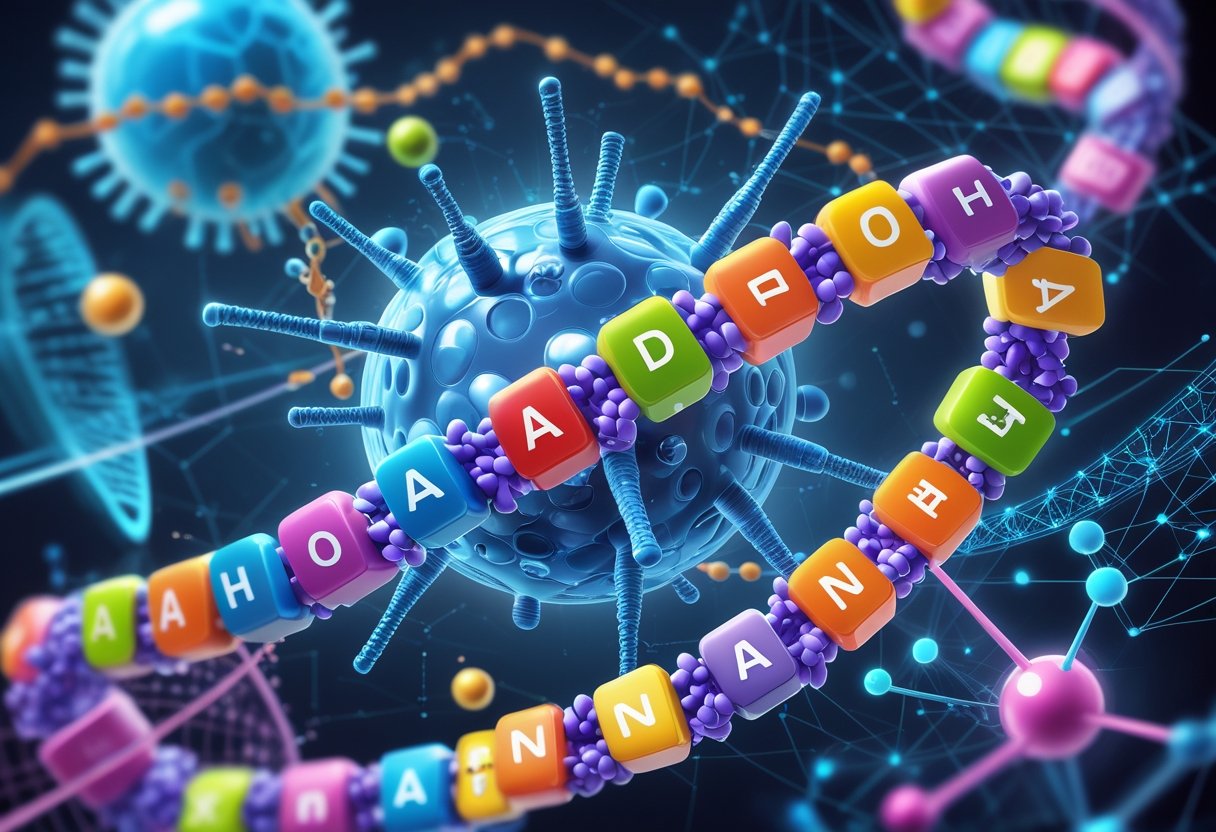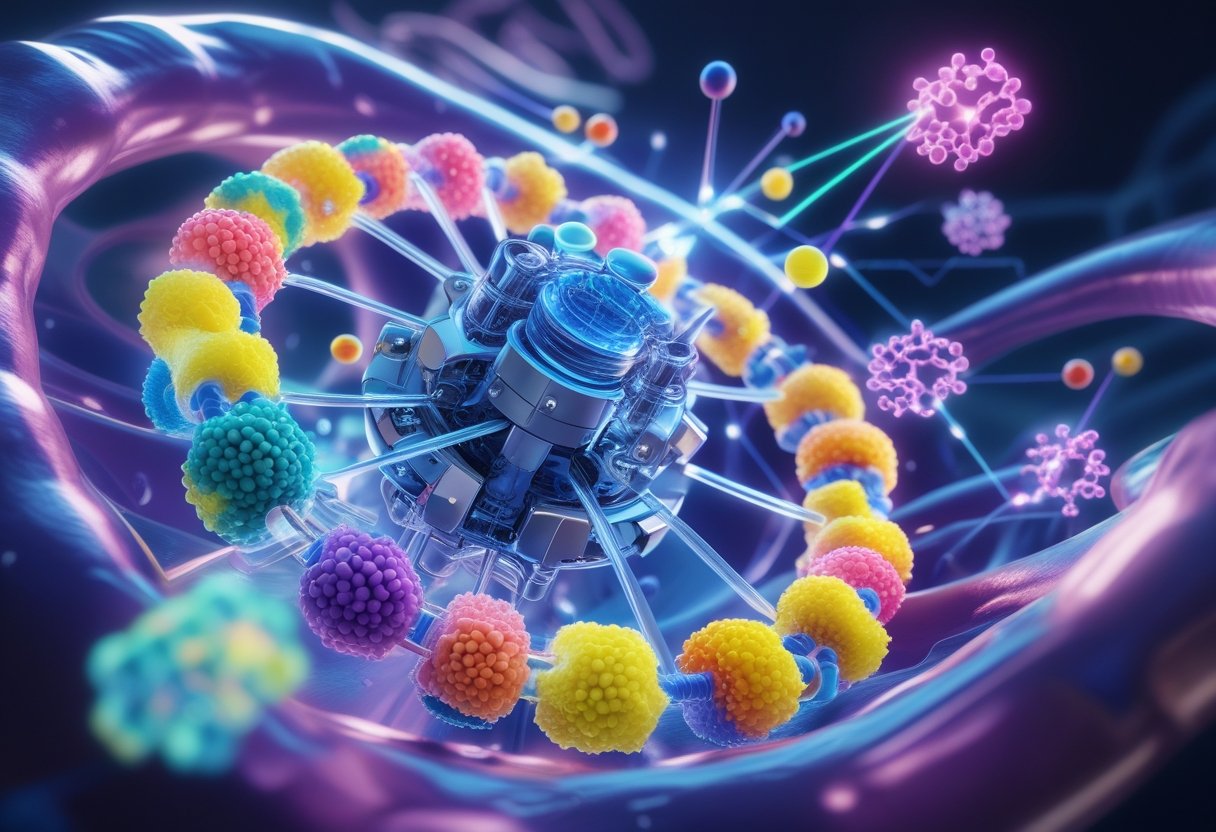The 20 amino acids are essential building blocks that the body uses to create all proteins needed for life. These molecules work together in unique ways, forming chains that give proteins their structure and function. Without all 20, the body cannot properly build or repair tissues, regulate important processes, or make enzymes that keep everything running smoothly.

Each amino acid plays a special part in supercharging protein synthesis, helping cells grow, heal, and respond to changes. Learning how these amino acids support protein creation helps people understand why balanced nutrition and proper amino acid intake matter so much in health and medicine. For anyone curious about how the body makes and uses proteins, the story behind these 20 amino acids is both fascinating and important.
Key Takeaways
- Amino acids are critical for building all proteins in the body.
- The combination of 20 amino acids drives protein synthesis and cell function.
- Advances in science use this knowledge to develop new therapies and technologies.
Understanding Amino Acids and Proteins
Amino acids serve as the building blocks for proteins, which are essential for most biological functions in the body. Each of the 20 standard amino acids has a unique structure that affects how proteins are formed and how they work.
What Are Amino Acids?
Amino acids are small molecules that each have a core structure: an amino group, a carboxyl group, a hydrogen atom, and a distinct side chain known as the R group.
There are 20 standard amino acids, and each one has a different R group. This side chain can affect an amino acid’s size, shape, and chemical behavior.
Amino acids connect together through peptide bonds. These links create long chains, which then fold into proteins. Without amino acids, protein synthesis would not be possible. They are so important that life on Earth is deeply connected to these molecules, and proteins are made up of 20 amino acids.
Structure and Function of Proteins
Proteins have complex structures that allow them to perform many functions in the body. Each protein starts as a chain of amino acids, but it folds into special shapes, such as coils and sheets. The way these chains fold depends on the order of amino acids.
There are four main levels of protein structure:
- Primary: sequence of amino acids
- Secondary: coils and sheets formed by folding
- Tertiary: three-dimensional shape due to side chain interactions
- Quaternary: combination of multiple protein chains
These structures enable proteins to act as enzymes, build tissues, carry messages, and support the immune system. A stable protein structure is critical for life, and changes in structure can lead to diseases. Protein function and biological evolution are closely linked because small changes in amino acids can lead to new proteins.
Classification of the 20 Standard Amino Acids
The 20 standard amino acids can be grouped based on their side chains. The main groups are:
- Nonpolar (hydrophobic): Glycine, Alanine, Valine, Leucine, Isoleucine, Methionine, Phenylalanine, Proline, Tryptophan
- Polar (hydrophilic): Serine, Threonine, Cysteine, Tyrosine, Asparagine, Glutamine
- Acidic: Aspartic acid, Glutamic acid
- Basic: Lysine, Arginine, Histidine
This classification matters because the side chains influence how amino acids interact in proteins. Essential amino acids are those that the human body cannot make on its own and must come from food. Together, all 20 are needed for complete protein synthesis and healthy body functions, as detailed in this introduction to proteins and amino acids.
The Fundamentals of Protein Synthesis
Protein synthesis is driven by the instructions in DNA, the functions of ribosomes, and the availability of all 20 amino acids. Each of these factors is necessary for the cell to build new proteins with the correct structure and function.
The Genetic Code and Translation
Cells use a set of instructions called the genetic code to guide protein synthesis. The genetic code is made up of codons, which are sequences of three nucleotides on messenger RNA (mRNA). Each codon directs the cell to add a specific amino acid to a growing protein chain.
During translation, transfer RNA (tRNA) molecules carry amino acids to the ribosome. Each tRNA pairs with a codon on the mRNA to ensure the correct amino acid is added. This ensures that the final protein has the correct order of amino acids, which is crucial for its function.
Mistakes in translation can lead to proteins that do not work as intended. Cells have proofreading mechanisms to reduce errors and build functional proteins efficiently. For more detail, see how protein synthesis uses the genetic code.
Role of Ribosomes as Protein-Making Factories
Ribosomes are the main sites for protein synthesis in all cells, including bacteria like E. coli. These small, complex structures move along the mRNA and join amino acids together by forming peptide bonds.
The ribosome has two subunits: one large and one small. These subunits work together to match tRNAs to the mRNA sequence and make sure that the amino acids are linked in the right order. Each new amino acid is attached to the end of the growing polypeptide chain.
Ribosomes can build proteins that range from about 50 up to over 1,000 amino acids in length. This helps the cell make a wide range of proteins, each with a unique role. To learn more, see this guide on ribosomes and protein synthesis.
Importance of All 20 Amino Acids in Synthesis
Twenty different amino acids are used to make all proteins. Each amino acid has a different side chain, giving it specific properties and functions. Without all 20 types, cells would not be able to build the full range of proteins they need.
Amino acids are linked together by peptide bonds to create long chains called polypeptides. The cell connects each amino acid in the order directed by its DNA.
If even one amino acid is missing, protein synthesis can stop or the final protein may not function properly. This is why it is vital that cells keep a supply of all 20 amino acids ready. For more information on the role of amino acids, see how proteins are built from 20 amino acids.
How Amino Acids Supercharge Protein Production
Amino acids act as the building blocks that drive protein production in cells. Both essential and non-essential amino acids have unique but connected roles that impact efficiency, growth, and muscle repair.
Synergy of Essential and Non-Essential Amino Acids
Essential amino acids cannot be made by the body and must come from food. Non-essential amino acids can be made by the body, but both types are needed for building proteins.
The process begins with cells using these amino acids to build long chains called polypeptides. The specific order and combination of all 20 amino acids decide how the protein will fold and function.
List of essential amino acids:
- Histidine
- Isoleucine
- Leucine
- Lysine
- Methionine
- Phenylalanine
- Threonine
- Tryptophan
- Valine
When essential and non-essential amino acids work together, they make protein production possible and support cell health. This balance is needed for muscle growth and tissue repair, as explained in this review of amino acids and muscle growth.
Optimizing Protein Production Efficiency
Efficient protein production depends on having enough of all twenty amino acids. If even one essential amino acid is missing, the process slows down or stops.
Key factors that improve protein production:
- Sufficient supply of all amino acids
- Proper sequence in the protein chain
- Fast and accurate polypeptide synthesis
Amino acids join with peptide bonds in a specific order. This order holds the information needed for protein function, as described in detail in biochemistry studies on protein structure.
Some amino acids—like lysine and arginine—are involved in creating supercharged proteins. These proteins interact strongly with other molecules, which can increase their performance in both natural and engineered systems. Supercharged proteins have been studied for new materials and medical uses, showing how managing amino acid makeup can enhance protein features.
Biological and Medical Implications

Amino acids help control many body processes, including insulin release and how cells use energy. They are also being used to create drugs that treat serious diseases.
Influence of Amino Acids on Insulin and Metabolic Regulation
Certain amino acids play a direct role in how the body makes and uses insulin. Insulin is important for controlling blood sugar and letting cells take in glucose. When the right amino acids are available, protein synthesis increases and the body responds better to insulin.
Amino acids like leucine and arginine can trigger insulin secretion from the pancreas. This affects how blood sugar is managed after eating. Abnormal amino acid levels can make it harder for the body to use insulin correctly, which may raise the risk for metabolic disorders like diabetes.
In some studies, people who get a balanced mix of amino acids show improved metabolic health. Doctors may use amino acid formulas in nutrition plans for people with blood sugar problems or muscle wasting.
Protein-Based Drugs: Designing the Future of Medicine
Scientists use the 20 amino acids to develop protein-based drugs for treating many conditions. These drugs can copy natural proteins in the body or even improve on them. Some target diseases at the molecular level, making treatments more precise.
Insulin itself is one of the first and most successful protein-based drugs, made using recombinant DNA technology. This technology uses living cells to produce human insulin for diabetes care. Other examples of protein drugs include monoclonal antibodies and enzyme replacements.
Biomedical experiments continue to test new combinations of amino acids to form powerful medicines. By understanding how amino acids impact protein synthesis, scientists can design drugs that fight infection, autoimmune diseases, and cancers more effectively.
Protein-based drugs often have fewer side effects than chemical medicines and can be tailor-made for a person's specific needs.
Advances in Protein Engineering and Biotechnology

Recent progress in protein engineering has transformed how proteins are produced and studied. Improved techniques allow scientists to synthesize specific proteins faster and safer for use in medicine and research.
Engineered Bacteria in Protein Synthesis
Engineered bacteria, especially E. coli, play a major role in protein production. These bacteria are altered to carry genes that code for important proteins, allowing manufacturers to make large amounts for research and therapy. Using E. coli is efficient because it grows quickly and uses simple nutrients.
Many medicines, including insulin and vaccines, are made with this technology. The genes introduced into bacteria allow them to assemble amino acids in the right order to form human proteins. This cuts down the time and cost needed to get these vital products. Newer methods now let scientists add unnatural amino acids to make proteins with new functions, broadening the range of protein-based therapeutics.
Key uses of engineered bacteria in protein synthesis:
- Fast, low-cost protein production
- Ability to modify protein structure and function
- Scalable for industrial or research needs
Green Fluorescent Protein in Research and Diagnostics
Green fluorescent protein (GFP) is a marker widely used in science and medicine. GFP glows under blue or ultraviolet light, making it easy to track proteins inside living cells. By attaching the GFP gene to a protein of interest, researchers can watch how proteins move or change in real time.
GFP helps in fields like:
- Cell biology: Tracking where proteins travel within a cell
- Diagnostics: Identifying which cells have certain genes or react to treatments
- Drug development: Testing how new drugs affect protein behavior
GFP is safe, easy to detect, and works in many types of cells. This makes it an important tool for research and diagnostics, leading to better understanding of diseases and new therapies.
Applications of Enhanced Protein Synthesis
Faster and more reliable protein synthesis drives progress in many fields. Industries can improve productivity, while medicine can deliver new types of treatments.
Commercial Benefits of Optimized Production
Enhanced synthesis of proteins lets companies manufacture large amounts of products, such as enzymes for laundry detergents, food processing, and biofuels. Higher efficiency means lower costs and less waste during production.
Industries using microorganisms to make protein-based drugs benefit from increased yields. For example, insulin and growth hormones—essential medicines for millions—can be produced at a higher rate when protein synthesis is optimized.
Key commercial impacts include:
| Area | Result |
|---|---|
| Enzyme Manufacturing | Faster output, cost savings |
| Pharmaceuticals | More supply, better margins |
| Agriculture | Enhanced livestock nutrition |
Companies investing in better amino acid management can boost the output and quality of their protein products. More efficient synthesis also reduces the chance of contamination, making products safer and more reliable.
Vaccine and Therapeutic Development
Advances in protein synthesis aid in the rapid construction of vaccine proteins and therapeutic antibodies. This technology helps researchers quickly respond to new diseases by making vaccine candidates much faster than with older methods.
Protein-based drugs, such as monoclonal antibodies, depend on precise and fast synthesis for their effectiveness. Enhanced protein production systems have led to quicker rollouts of important treatments, including those used against cancer and autoimmune diseases.
Teams can also use improved synthesis techniques to make complex proteins not possible before. This makes it easier to test new drugs and create vaccines that target specific viruses or bacteria, as described in articles on the role of essential amino acids in protein synthesis.
Notable Discoveries and Current Research
Breakthrough research continues to expand understanding of amino acids in protein synthesis. New methods and tools have helped scientists visualize and control protein production more precisely than ever before.
Pioneering Studies in Nature Communications
Recent work published in Nature Communications has revealed that the unique chemical properties of the 20 amino acids are crucial for effective protein synthesis. Scientists have studied why living things use these specific amino acids instead of others.
Researchers displayed how the selection of these 20 amino acids influences how efficiently new proteins form. Some experiments have even tried to change or add new amino acids, but most living cells still perform best with the classic set.
Studies are ongoing. Many focus on how these amino acids impact protein structure, stability, and function. The findings help explain why the 20 “proteinogenic” amino acids remain nearly universal.
Role of Green Fluorescent Protein (GFP) and Fluorescent Light
Green fluorescent protein (GFP) has become a critical tool for tracking amino acids and proteins inside cells. When exposed to certain types of fluorescent light, GFP glows, allowing scientists to watch protein synthesis in real time.
This process makes studying how proteins fold, move, and interact much easier. By tagging proteins with GFP, researchers can quickly see if they’re made correctly and how they behave in different environments.
GFP and similar markers have helped with discoveries about how amino acids and their chains function as signals and building blocks. These tools improve the accuracy and speed of modern protein analysis in research labs.
Conclusion
The 20 amino acids are the building blocks that allow the body to make all kinds of proteins. Each amino acid has a unique side chain and a specific role in protein structure and function.
Amino acids can be grouped into essential and non-essential types. Essential amino acids must be obtained from the diet, while the body can make non-essential amino acids on its own. Both types are crucial for healthy growth and tissue repair.
Key Points:
- 20 amino acids combine in various ways to form proteins
- Essential amino acids come from food
- Non-essential amino acids are made by the body
- Together, they support body functions like muscle growth and enzyme activity
The proteins built from these amino acids help carry out many vital jobs. These include enzyme catalysis, cell signaling, and giving tissues their structure and strength. Proteins are made during protein synthesis, which uses instructions from DNA and the available amino acids. Learn more about their important roles at Biochemistry, Essential Amino Acids and The Twenty Amino Acids.
Every organism relies on these 20 amino acids to survive and grow. Without them, protein synthesis could not happen, and the body would not function properly.
Frequently Asked Questions
Amino acids play a direct role in building proteins and supporting healthy body function. Some amino acids must come from foods, while others can be made by the body.
How many amino acids are classified as essential for human nutrition?
Nine amino acids are considered essential for human nutrition. They must be obtained from dietary sources because the body cannot produce them on its own.
What distinguishes essential amino acids from non-essential amino acids?
Essential amino acids must come from the diet, while the body can make non-essential amino acids. Both types are needed for protein synthesis, but only the essential ones are required through food intake.
What are the structural differences among the 20 amino acids involved in protein synthesis?
Each amino acid has a similar backbone with an amino group, a carboxyl group, and a hydrogen atom. The difference comes from the unique side chain or “R group” attached to each amino acid. These structural differences affect how amino acids interact with each other in proteins.
Which amino acids are considered conditionally essential and under what circumstances?
Some amino acids, like arginine and glutamine, are considered conditionally essential. This means the body usually makes enough of them, but during rapid growth, illness, or stress, more may be needed from the diet.
How do amino acids interact to influence protein structure and function?
Amino acids join together through peptide bonds to make proteins. The properties of their side chains can cause proteins to fold in specific ways. These interactions then decide a protein’s final shape and its job in the body.
Why is the precise sequence of amino acids essential in protein construction?
The exact order of amino acids in a chain determines how a protein folds. If the sequence changes, the protein may not work as it should, or it may not function at all. The genetic code sets the sequence and is necessary for the proper function of all proteins.

